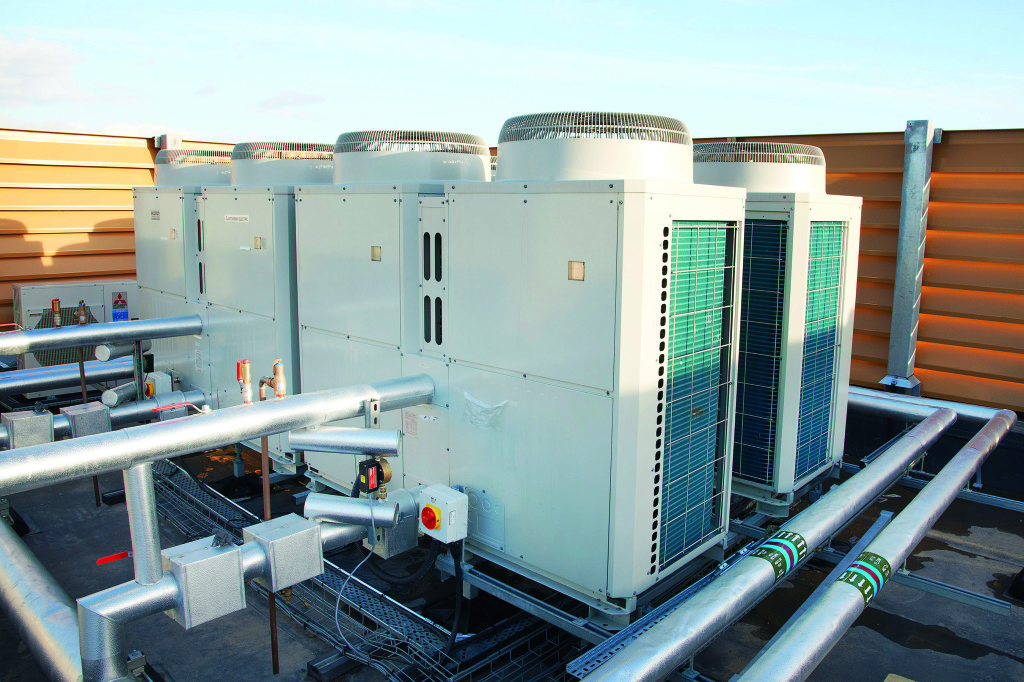Advertorial - Refurbishing schools and colleges for Net Zero – and the people who work and learn in them.

Upgrading school and college buildings to meet challenging Net Zero goals can go hand-in-hand with making these buildings better places to work and learn. Mike Egan, Business Development Manager, Corporate Solutions for Mitsubishi Electric LES looks at the options.
In the UK’s pursuit of Net Zero greenhouse gas emissions by 2050, all aspects of government and the public sector must take a role, including the Department for Education (DfE), which aims to achieve Net Zero across the UK’s educational estate.
The DfE has established two science-based milestone targets for reducing emissions against a 2017 baseline:
* 50% reduction by the end of Carbon Budget 5 (2032)
* 75% reduction by the end of Carbon Budget 6 (2037)
These are worthy objectives but pose a tough challenge for school governors, heads and facilities teams. It’s possible to deliver a new, low-carbon and highly energy- efficient school building, but bringing existing buildings up to these expectations requires careful thinking and planning.
The DfE’s Good Estate Management for Schools (GEMS) guide points out that good energy management can save 10% to 30% of a school’s energy costs and benefit the environment. A critical area for consideration in these refurbishment projects is building services, including heating, hot water, ventilation and cooling.
These also support the health and comfort of teachers and students.
There is also a growing impetus from the government to reduce the use of fossil fuels across the public sector estate, which includes school and college buildings, meaning divesting the estate of its old gas boilers. Most schools and colleges do not have on-site facilities and expert engineering teams, so refurbishing equipment for heating, hot water and cooling must be easy to operate, with robust performance and low maintenance requirements.
For most school and college management teams, there are four main goals to hit when tackling these issues:
Source funding for refurbishments
There are several government grants and schemes to make school and college upgrades more achievable, including School Condition Allocations (SCA), Condition Improvement Fund (CIF) and the Public Sector Decarbonisation Scheme (PSDS), which provide grants for schools and colleges to switch to alternatives such as heat pumps, as well as for energy efficiency improvements.

Decarbonise school and college buildings
Developments in heat pump technology are making this more straightforward. Heat pumps can now deliver heating, hot water, and even cooling. PSDS has helped many schools update their gas boiler by making heat pumps affordable.
Improve indoor air quality
Ventilation is now an essential consideration to support the health and wellbeing of teachers and students while future- proofing buildings against the effects of climate change as the UK experiences more extreme summers. Mechanical ventilation with heat recovery (MVHR) is a good option for balancing ventilation needs with energy efficiency. MVHR systems capture heat energy from the outgoing air and apply it to the incoming air, reducing the need to pre-heat air, particularly when the weather is cooler.
Deal with requirements for ‘specialist’ areas, such as ICT suites
Cooling is another comfort and safety factor to consider when refurbishing older buildings. We see growing requirements for ICT suites for computing and digital skills courses. Equipment such as PCs, laptops and screens all create a lot of heat, making these spaces uncomfortable for teachers and students and the equipment.
Plan for long-term management and maintenance for efficiency and cost-effectiveness
It’s not only these specialist areas where cooling must be considered. While there is no official maximum temperature for classrooms, 26oC is recommended for the health and safety of teachers and students.
Maintaining this level indoors while outdoor temperatures rise can be challenging. While air conditioning may not have been considered important for schools and college buildings, it is increasingly affordable. Variable refrigerant flow (VRF) air conditioning systems can provide heating and cooling, making it a practical option for decarbonising buildings where using a heat pump to replace a gas boiler is impossible.
Building services such as heating, hot water and cooling are crucial for modern school and college buildings. They contribute to healthyoptimised spaces for teachers and students. Refurbishment of schools and colleges should include these systems because updates pay back in terms of reduced carbon, lower energy use and better indoor conditions for teachers and students.







